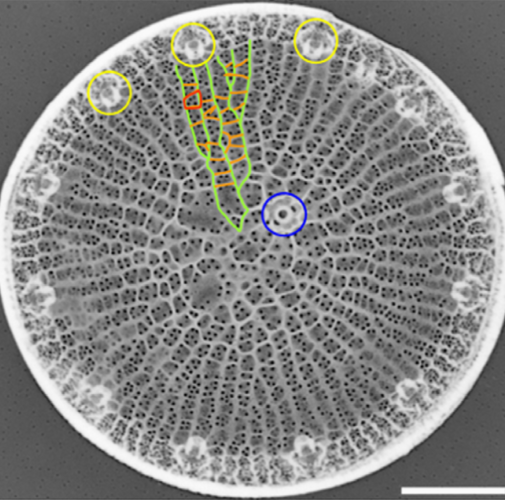Control of biosilica morphology and mechanical performance by the conserved diatom gene Silicanin-1.
The species-specifically patterned biosilica cell walls of diatoms are paradigms for biological mineral morphogenesis and the evolution of lightweight materials with exceptional mechanical performance. Biosilica formation is a membrane-mediated process that occurs in intracellular compartments, termed silica deposition vesicles (SDVs). Silicanin-1 (Sin1) is a highly conserved protein of the SDV membrane, but its role in biosilica formation has remained elusive. Here we generate Sin1 knockout mutants of the diatom Thalassiosira pseudonana. Although the mutants grow normally, they exhibit reduced biosilica content and morphological aberrations, which drastically compromise the strength and stiffness of their cell walls. These results identify Sin1 as essential for the biogenesis of mechanically robust diatom cell walls, thus providing an explanation for the conservation of this gene throughout the diatom realm. This insight paves the way for genetic engineering of silica architectures with desired structures and mechanical performance.

- Commun Biol. 2019 Jun 28;2:245
- 2019
- Biomaterials
- 31286062
- PubMed
Enabled by:
